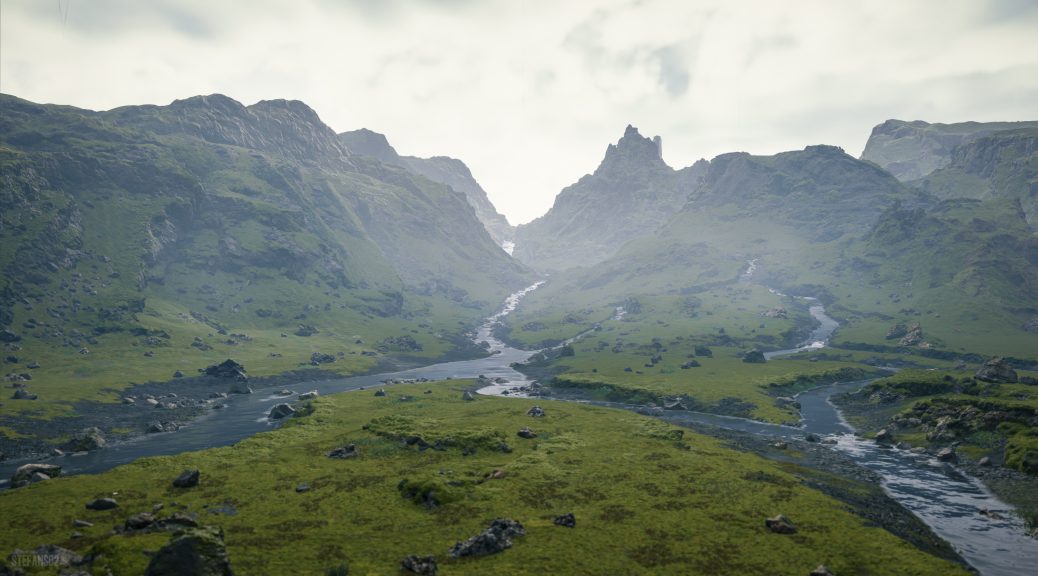Yes, the first one. I know, I know… I’m absurdly late to the party.
So why now? I finally bought it because as with most AAA games, which I always get long after they’re released, I felt I had no excuse to postpone this one any further. Mainly because Death Stranding already came out back in 2019, now the second game was just released, and I’m already being hit with spoilers for both games left and right. Thus: It was on sale. I bought it, installed it, and found myself walking across Kojima’s America about one half-hour intro later.
The whole thing is a paradox in pixel form: It’s slow, it’s lonely and it’s tedious more often than not. But it had me the second the fierce, melancholy ache of Low Roar’s Don’t Be So Serious hit me. I didn’t think I could so quickly become attached to a game which accompanies you with music as half solemn funeral march, half whiny indie ballad, combined with a strange kind of silence while you navigate craggy landscapes beneath low skies while trying not to drop your cargo and keeping your flasked Geiger-counter baby alive (yes, really).
Kojima masterfully constructed landscapes that feel empty, but still feel full of absence’s gravity. Towers of concrete, ghostly specters, roped pathways between isolated enclaves: the architecture of loneliness as natural space. You cross these spaces as a pilgrim, delivering parcels and binding together a fracturing nation, one knot-city at a time. It’s a myth of connection through absence. The dead bleed into the living.
BTs — haunting creatures born of death — are a monstrous manifestation of the player’s task: repairing a world broken by its refusal to mourn. The game names its abstraction “timefall,” a rain that ages everything it touches, suggesting that perhaps some of us are already decaying beneath our denial.
I’d heard a lot about this game before, most importantly that apparently, you either loved it or you hated it on account of it being so strange and so akin to what some people snarkily call a “post-apocalyptic UPS simulator” and similar things. After only half an hour into this game, I already knew that Death Stranding had me captivated and I reserve my right to disagree with the hate brigade. It is, in every corner of its design, simply beautiful. As long as you’re not being attacked, anyway.
The game’s silence is everywhere, it permeates every scene and every interaction. It echoes something older, like a distant memory. It feels less like playing a game and more an exercise in mapping absence. You meet the living, but speak more often to the dead. You build, but everything you build is temporary, dissolving in timefall. You deliver parcels, like offerings to invisible gods.
There’s a deep serenity here, but it’s mournful. Rain falling. Grass bending. A serenity carved out of grief. The game is about death, but also about holding on, even if just barely, to the idea that something can still be salvaged. It speaks to a primal human need of leaving something behind, even so much as a footprint, which defies being forgotten.
Maybe it resonates because it’s not about conquering a post-apocalypse, but just walking through it, which is a welcome change from how similar games treat the wasteland. Instead of the usual nuclear fallout spectacle, it gives you quiet stubbornness, an introspective ritual of return and defiance. With a natural ease, this game manages to address remembrance of the dead so artfully that it seems unsurprising if it tugged on the heartstrings of those who have ever lost someone dear. This may also be part of an explanation for its continued success: How could it fail to strike a personal chord in anyone who has ever known loss?
But maybe it also reminds me of the fact that I’m still waiting for a couple DHL packages that haven’t yet arrived. Well played, Hideo. Maybe this, maybe that. I’m positively surprised by the effect this game had on me and what it has to offer.
In any case, while not that far into it yet, I’ve started to trace this strange cartography of silence the game lays out. My Sam Porter Bridges started walking it with tenacity, grim determination and an inhuman amount of cargo, so far unsure where his path will lead. We’ll see where he goes.
